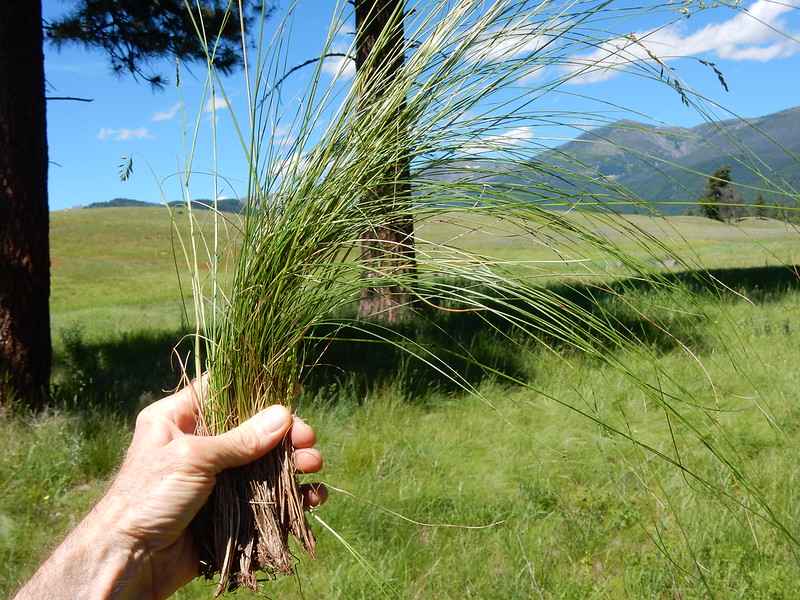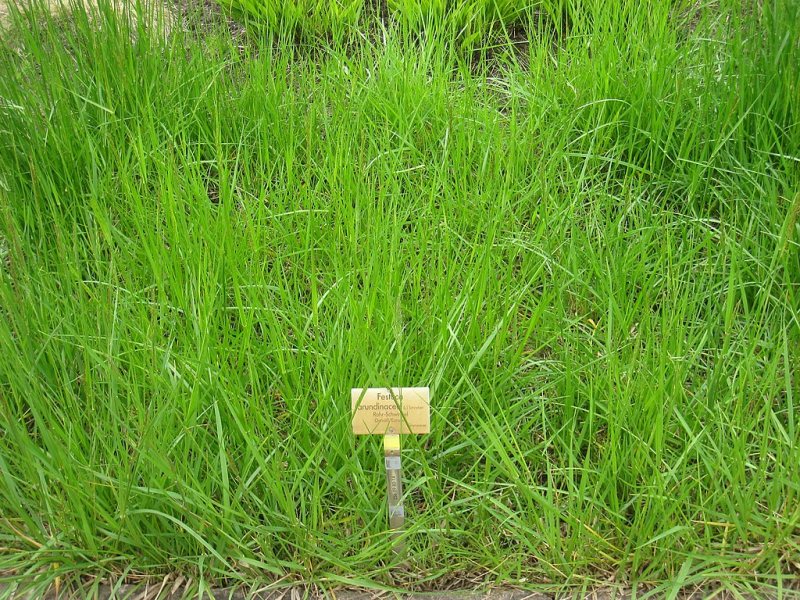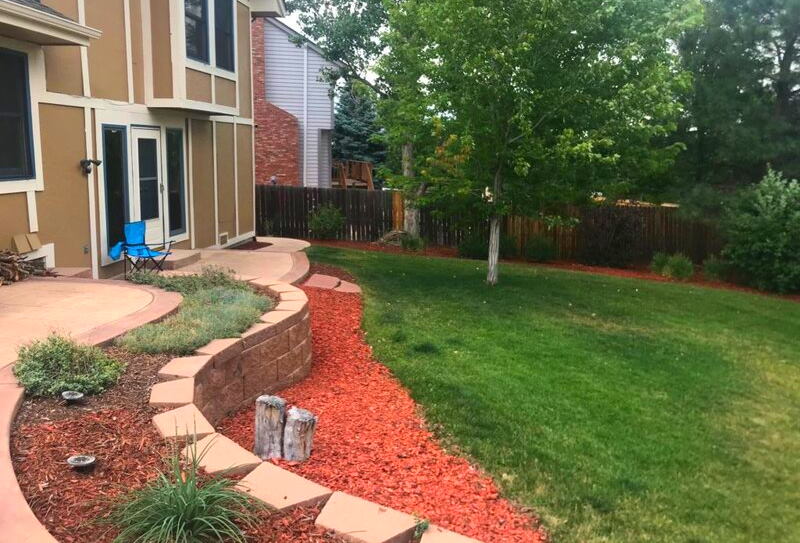4 Best Grass Seeds for Spokane, WA
BY ABDUL WADOOD | MAY 3RD, 2023 | LAWN CARE, SPOKANE, WASHINGTONOne of the great things about Spokane is its natural diversity and distinct seasons. But all that diversity has a price: Not all grasses thrive in conditions that swing from hot to cold and snowy.
So if a beautiful lawn is a must-have, it pays to know what kinds of grasses do well in our unique climate. Here are the four best grasses for your Spokane lawn.
In this article:
- Best Grass Types for Spokane Lawns
- FAQ About Spokane Grass Types
- How to Choose the Right Grass Type for Your Spokane Lawn?
Best Grass Types for Spokane Lawns
There are two primary types of grasses.
- Warm-season grass: They grow best during late spring and summer when the temperatures are between 75 and 90 degrees Fahrenheit. These grasses are originally from tropical regions and are best suited for the southern half of the United States.
- Cool-season grass: They grow best during early spring and fall when the temperatures are between 55 and 75 degrees Fahrenheit. These grasses suit regions with distinct seasons and cold winters.
Cool-season grasses are your go-to choice for Spokane’s warm summers and cool snowy winters.
1. Fine Fescue

Red fescue, a type of fine fescue
Photo Credit: Matt Lavin / Flickr / CC BY-SA 2.0
Fine fescue is a highly versatile grass that does well in shade but also tolerates full sun. The leaves appear medium green with thin grass blades and a soft texture. Fine fescue is a low-maintenance grass but is susceptible to red thread. You can minimize the damage with proper nutrients and fungicides.
Fine fescue can survive with minimal watering. However, if you plan on hosting many events in your yard, we don’t recommend this grass as it doesn’t tolerate high foot traffic.
Fine fescue is a popular grass type across Washington. However, we recommend you mix it with other cool-season grasses, as fine fescue takes a long time to recover from damage.
- Classification: Cool-season grass
- Spreads by: Bunch-type
- Shade tolerance: High
- Drought tolerance: High
- Foot traffic tolerance: Low
- Maintenance needs: Low
- Mowing height: 1 to 3 inches
- Potential for disease: Moderate. Common diseases include red thread, leaf spot, dollar spot, summer patch, and powdery mildew.
2. Turf-Type Tall Fescue

Photo Credit: Daderot / Wikimedia Commons / Public domain
Tall fescue is a coarse-textured grass that’s medium to dark green in color. It tolerates shade really well and needs just four hours of dappled sun a day to survive. Tall fescue has a deep root system, making it drought-tolerant, too.
While tall fescue can endure kids and pets playing, it doesn’t tolerate heavy foot traffic because it doesn’t contain stolons or rhizomes to repair itself. So, you have to overseed your tall fescue lawn to fill the damaged spots.
Tall fescue requires little maintenance and can grow in almost all types of soils, but it prefers fertile, well-drained soil. It also resists diseases and insects.
- Classification: Cool-season grass
- Spreads by: Bunch-type
- Shade tolerance: Moderate
- Drought tolerance: High
- Foot traffic tolerance: Low
- Maintenance needs: Low
- Mowing height: 3.5 to 4 inches
- Potential for disease: Tolerant of most diseases when you properly maintain it
3. Kentucky Bluegrass

Photo Credit: Brenda Ryan / Wikilawn
Kentucky bluegrass (KBG) is one of the most popular grass types in the United States. It looks beautiful with its dense and medium- to dark-green appearance. KBG is smooth-textured but can tolerate high foot traffic and recovers quickly from damages.
Kentucky bluegrass prefers full sun and requires regular watering. It’s a high-maintenance grass that requires frequent mowing and fertilization.
Kentucky bluegrass can be a good option for your Spokane lawn only if you mix it with other cool-season grasses. You can use a grass blend of 75% KBG and 25% fine fescue or another cool-season grass.
- Classification: Cool-season grass
- Spreads by: Bunch-type
- Shade tolerance: Moderate
- Drought tolerance: Moderate
- Foot traffic tolerance: High
- Maintenance needs: High
- Mowing height: 2.5 to 3 inches
- Potential for disease: Moderate. Prone to diseases such as dollar spot, leaf spot, necrotic ring spot, summer patch, and stripe smut.
4. Perennial Ryegrass

Photo Credit: Dr Mary Gillham Archive Project / Flickr / CC BY 2.0
Perennial ryegrass is among the fastest-growing grass types, requiring only about 10 days or less for the seeds to sprout. It’s a fine-textured grass that looks beautiful with its dark green leaves.
Perennial ryegrass is soft on bare feet and tolerates high traffic. In fact, it’s so durable that it’s popular for golf courses in many parts of the country. On the downside, perennial ryegrass doesn’t quickly recover from damage.
Perennial ryegrass grows best in full sun and requires regular watering. It’s susceptible to red thread. But you can avoid it with proper maintenance.
- Classification: Cool-season grass
- Spreads by: Bunch-type
- Shade tolerance: Low
- Drought tolerance: Moderate
- Foot traffic tolerance: High
- Maintenance needs: Moderate
- Mowing height: 1.5 to 2.5 inches
- Potential for disease: High. Common diseases include gray leaf spot and red thread.
FAQ About Spokane Grass Types
Fine fescue and turf-type tall fescue are the best options for a low-maintenance lawn.
In Spokane, the best option for a shady lawn is perennial ryegrass.
Fine fescue and turf-type tall fescue have low watering needs.
The Final Word
Any of these cool-season grasses will thrive in your Spokane lawn, so choose one that best suits your needs.
But if you want to enjoy your free time with your family instead of doing lawn chores, Wikilawn Spokane lawn care pros are here to help. We can also transform your ordinary lawn into a beautiful garden to create a better living environment for your family.
Main Photo Credit: Manito Park / Roman Eugeniusz / Wikimedia Commons / CC BY-SA 3.0